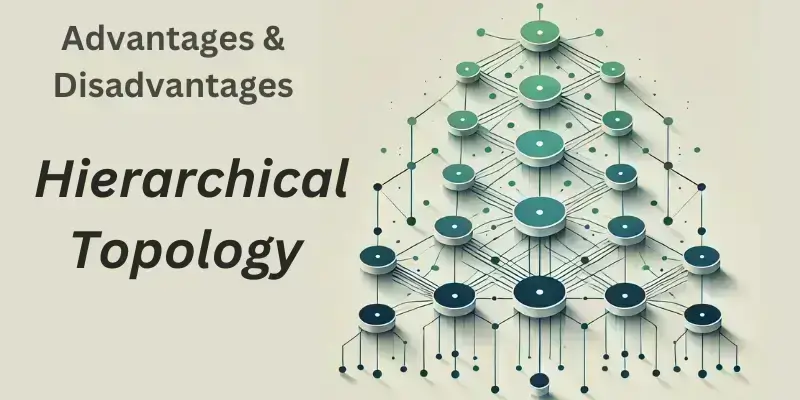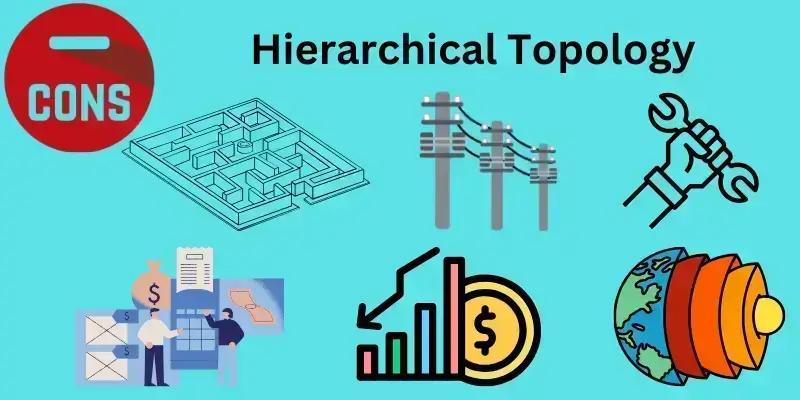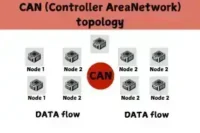Hierarchical Topology Advantages and Disadvantages
Published: January 27, 2025
Due to its organized structure, hierarchical topology is a popular choice in networking. It simplifies management and improves scalability, but it has pros and cons like any system. Let’s explore the advantages and disadvantages of hierarchical topology to see if it’s the right fit for your network.

What is Hierarchical Topology?
A hierarchical topology is a network design in which devices are arranged in layers or levels, forming a tree-like structure. It organizes the network into tiers, each with a specific role, allowing efficient communication and management.
Hierarchical topology is also known as a tree topology.
Advantages and Disadvantages of Hierarchical Topology
Understanding Hierarchical Topology Advantages and Disadvantages helps you decide if this design fits your network needs effectively.
Advantages of Hierarchical Topology
By exploring the advantages of hierarchical topology, you can understand how this structure supports efficient network management and growth.

Here are the key advantages of the Hierarchical Topology you need to know:
- Scalability
- Simplified Management
- Efficient Traffic Flow
- Redundancy and Reliability
- Improved Performance
Let’s find out how it helps make everything more efficient for us.
Scalability
Growing the network is easy because you can add more layers or devices as needed. It makes it great for companies that expect to expand in the future.
Simplified Management
Hierarchical networks are easier to manage because everything is organized into different layers. You can control and monitor the network more quickly without affecting the whole system.
Efficient Traffic Flow
Data travels faster and more smoothly because it can be routed through different layers. This reduces traffic jams and improves the network’s performance.
Redundancy and Reliability
There are multiple ways for data to travel, so if one route fails, the data can find another way. It makes the network more reliable and less likely to experience downtime.
Improved Performance
Separating heavy traffic into different layers makes the network run faster and more efficiently. It keeps things running smoothly even when there’s a lot of data to send.
Disadvantages of Hierarchical Topology
These are the primary disadvantages of the Hierarchical Topology, which might impact its suitability for your needs.

Knowing the Hierarchical Topology Disadvantages is essential to avoid potential challenges during network setup.
- Complex Design
- High Cost
- Single Point of Failure
- Dependency on Higher Layers
- Maintenance Overhead
- Underutilization of Resources
Here’s a detailed overview of the downsides of Hierarchical Topology and why they might not be the best option in some cases.
Complex Design
Setting up a hierarchical network is complicated and needs careful planning. If not designed properly, it could cause problems or slowdowns.
High Cost
Hierarchical networks can be expensive to build and maintain because special equipment and skilled workers are needed to set them up and keep them running.
Single Point of Failure
If the central part of the network fails, it can affect everything. This is a risk with hierarchical networks, where a failure in one area can take down the whole system.
Dependency on Higher Layers
The lower layers depend on the higher layers to send data. If the higher layers become too slow or have problems, it can slow down the whole network.
Maintenance Overhead
With many layers to maintain, regular checks and maintenance are needed, which can be time-consuming and expensive.
Underutilization of Resources
Sometimes, the lower layers of the network are not fully used, which means some parts of the network are not working as efficiently as they could be.
Conclusion
We’ve covered the advantages and disadvantages of hierarchical topology in detail, giving you a clear understanding of its benefits and challenges. If you need a structured, scalable network, hierarchical topology is a great choice, but be mindful of its complexity and cost. Ready to make a decision? Explore more about the advantages and disadvantages of hierarchical topology to see if it’s the right solution for your needs!
FAQs About Hierarchical Topology Advantages and Disadvantages
A hierarchical topology is a network design in which devices are arranged in layers, with a top layer controlling the lower layers. It simplifies management and allows for scalability in large networks.
The main advantages include easy scalability, better organization, and centralized control. It also helps in troubleshooting since layers are clearly defined.
A disadvantage is that it relies heavily on the top layer or root node. If the top layer fails, the entire network may stop working, creating a single point of failure.
A hierarchical topology is more organized and scalable than bus or ring topologies, but it can be more expensive to set up. Its dependency on the root node makes it less reliable than a mesh topology.
Yes, but it’s often better for large networks where multiple devices must be managed. Simpler topologies like bus or star might be more cost-effective in smaller networks.
Scalability means adding more devices or layers without disrupting the existing network. It makes hierarchical topology ideal for growing businesses.
Yes, it can be costly because it requires advanced equipment and skilled personnel to set up and maintain. The layered structure and centralized control add to the costs.
Troubleshooting is easier because issues are confined to specific layers. For example, if a device in the bottom layer fails, it won’t affect the top layer, making problem identification straightforward.
Yes, because traffic is managed at different layers, reducing congestion. However, if the root node is overloaded, performance can suffer.
Hierarchical topology is commonly used in corporate networks, data centers, and schools. These environments need organized, scalable, and centrally managed networks.





